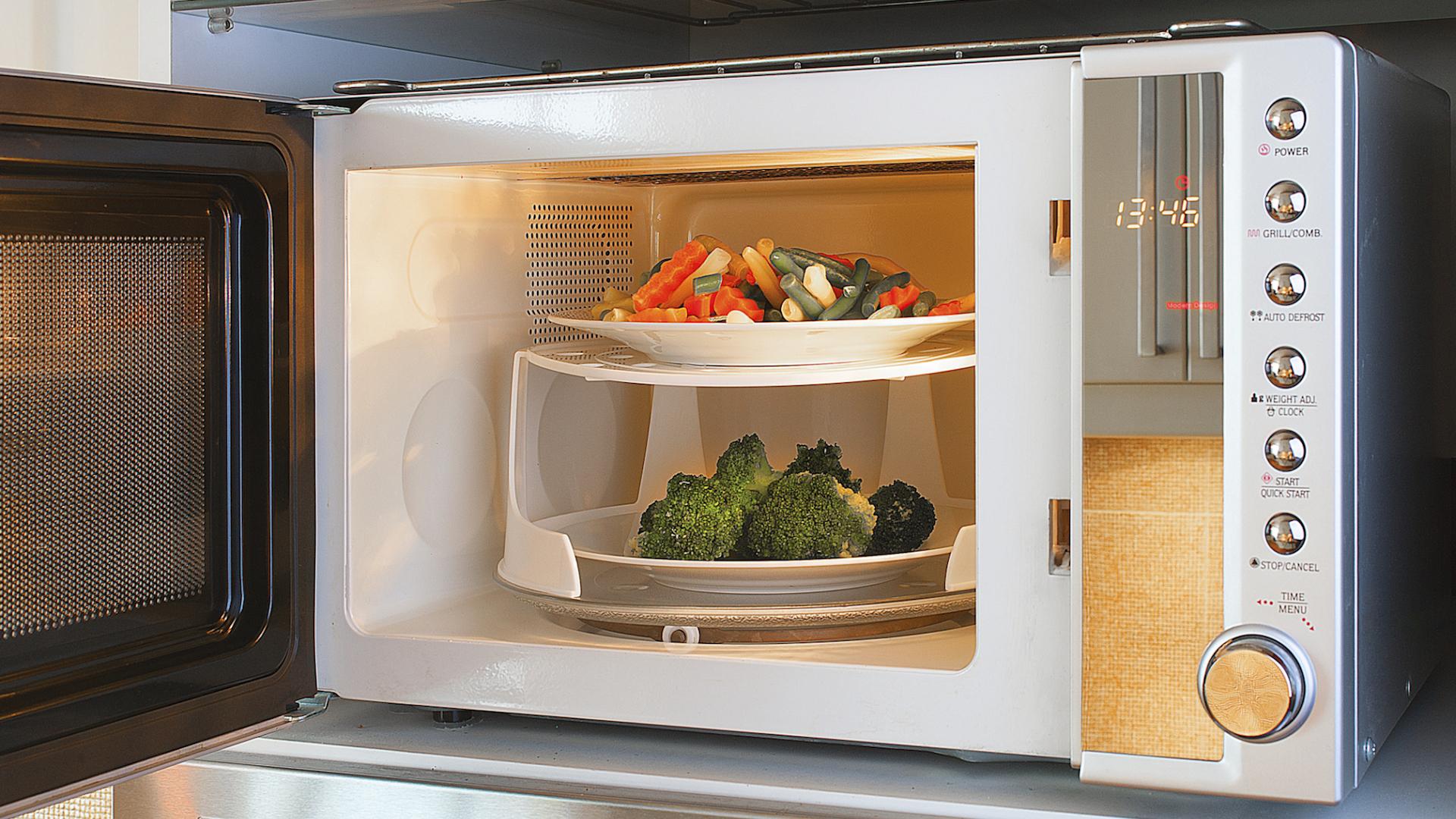

Articles
How Much Is A Microwave Oven
Modified: February 28, 2024
Find out how much a microwave oven costs and get helpful tips and articles on buying the perfect one for your needs.
(Many of the links in this article redirect to a specific reviewed product. Your purchase of these products through affiliate links helps to generate commission for Storables.com, at no extra cost. Learn more)
Introduction
Welcome to the world of modern kitchen appliances, where convenience and efficiency are at the forefront. One such appliance that has become a staple in households around the globe is the microwave oven. Its ability to quickly and effortlessly heat or cook food has revolutionized the way we prepare meals.
The microwave oven is a common sight in kitchens, offices, and even dorm rooms. From reheating yesterday’s leftovers to popping a bag of popcorn, this versatile appliance has found its way into our daily lives. But have you ever wondered just how much a microwave oven costs? In this article, we will delve into the world of microwave ovens and explore the factors that influence their prices.
Before we delve into pricing, let’s take a step back and explore the history of microwave ovens. The concept of microwave heating was discovered by accident in the 1940s by a scientist working on radar technology. This accidental discovery led to the development of the first commercially available microwave oven in the late 1940s, which was rather large, expensive, and impractical for home use.
Over the years, advancements in technology, design, and manufacturing processes have made microwave ovens more compact, affordable, and efficient. Today, a microwave oven can be found in various sizes, styles, and functionalities to suit different needs and preferences. So, how exactly does a microwave oven work?
A microwave oven uses electromagnetic radiation in the microwave frequency range to heat or cook food. These microwaves, which are produced by a component called a magnetron, excite the water molecules present in the food, causing them to vibrate rapidly. This friction generates heat, quickly and evenly heating or cooking the food. The efficiency and speed of a microwave oven make it a popular choice for those who lead busy lives.
Now that we have a basic understanding of how a microwave oven works, let’s explore the different types available in the market. There are primarily three types of microwave ovens: countertop, over-the-range, and built-in. Countertop microwave ovens are the most common and are versatile in their placement, as they sit on a countertop or a sturdy surface. Over-the-range microwave ovens are installed above a cooking range or stovetop and offer the advantage of saving counter space. Lastly, built-in microwave ovens are designed to be integrated into kitchen cabinetry, providing a seamless look.
When it comes to the price of microwave ovens, several factors come into play. The brand, size, features, and additional functionalities all contribute to the overall cost. In the next sections, we will explore these factors in more detail and provide insights into popular microwave oven brands and their price ranges.
So, if you’re ready to navigate the world of microwave ovens, buckle up, and let’s dive into the factors that affect their price and find the perfect microwave oven for your needs!
Key Takeaways:
- Microwave ovens have evolved from a bulky, commercial appliance to a compact, efficient kitchen essential. Factors affecting prices include brand, size, power, features, and design, catering to diverse needs and budgets.
- When purchasing a microwave oven, consider brand reputation, size, features, and budget. Popular brands like Panasonic, Samsung, LG, Whirlpool, GE, and Breville offer a range of models to suit various cooking needs and preferences.
History of Microwave Ovens
The story of microwave ovens dates back to World War II when a scientist named Percy Spencer accidentally discovered the heating effect of microwaves. Spencer was working on a magnetron, a component used in radar systems, when he noticed that a candy bar in his pocket had melted. Intrigued by this unexpected phenomenon, he decided to experiment further.
In 1945, Percy Spencer patented the first microwave cooking oven under the company name Raytheon. This initial microwave oven was bulky, stood about 6 feet tall, and weighed around 750 pounds. Considering its size and weight, it was primarily used in commercial settings like restaurants and ships.
However, as technology continued to advance, the size of microwave ovens began to decrease, making them more suitable for residential use. In 1967, Amana Corporation introduced the first countertop microwave oven, which revolutionized the way people cooked and reheated food in their homes. The compact size and convenience of these microwave ovens made them an instant hit with consumers.
Throughout the 1970s and 1980s, microwave ovens continued to evolve, and their popularity grew exponentially. Manufacturers began to incorporate more advanced features and functionalities, enhancing the overall user experience. Microwave ovens now offered various power settings, defrost options, and even sensor technology that automatically adjusted cooking times and power levels based on the food being heated.
As the demand for microwave ovens increased, so did the competition among manufacturers. This resulted in more affordable prices, making microwave ovens accessible to a wider range of consumers. Today, microwave ovens are a common sight in kitchens around the world, thanks to their convenience, speed, and versatility in preparing meals.
Along with the advancements in technology, microwave ovens have also become more energy-efficient in recent years. Manufacturers have implemented features like Eco Mode and standby power reduction to minimize energy consumption when the oven is not in use. This focus on energy efficiency aligns with the growing awareness and importance of sustainability and reducing carbon footprints.
In recent times, microwave ovens have also embraced smart technology. Wi-Fi and voice control capabilities have been integrated into some models, allowing users to control their microwaves from their smartphones or via virtual assistants like Amazon Alexa or Google Assistant. This adds another level of convenience and enhances the overall cooking experience.
Overall, the history of microwave ovens showcases their evolution from a large, cumbersome appliance to a compact, efficient, and feature-rich kitchen essential. The continuous innovation and improvements in technology have made microwave ovens a staple in modern households, providing a quick and effortless way to prepare and heat meals.
How a Microwave Oven Works
Have you ever wondered how a microwave oven is able to heat or cook food so quickly and efficiently? The answer lies in the fascinating process of microwave heating.
At the core of every microwave oven is a component called a magnetron. This magnetron produces electromagnetic waves in the microwave frequency range, typically around 2.45 gigahertz. These waves are commonly referred to as microwaves. When you set the cooking time and power level on your microwave oven and press start, the magnetron activates and emits these microwaves into the oven cavity.
Inside the oven cavity, microwaves bounce off the walls, ceiling, and floor due to their reflective nature. This bouncing creates a pattern known as standing waves, with points of high energy and points of low energy. The location of the food within the oven determines where these high and low energy points occur.
Now, let’s understand how these microwaves interact with the food. When the microwaves come into contact with food, their energy is absorbed by water molecules present in the food. Unlike solids and fats, water molecules are polar, which means they have positive and negative charges. This polarization allows them to rapidly vibrate when exposed to microwaves.
As the water molecules vibrate, they generate friction and heat. This heat is then transferred throughout the food, evenly cooking or heating it. The efficiency of microwave ovens lies in the fact that they directly heat the water molecules inside the food, as opposed to heating the surrounding air or the oven cavity.
It’s important to note that not all materials are microwave-safe. Metal objects, for instance, reflect microwaves and can cause sparks or fire hazards. That’s why you’ll often find warnings about not using metal containers or utensils in a microwave oven. Similarly, certain plastics can melt or release harmful chemicals when exposed to high temperatures, so it’s important to use microwave-safe containers made of glass or microwave-safe plastics.
Most modern microwave ovens come with additional features and functionalities to enhance the cooking experience. These features can include pre-set cooking programs for specific food items, defrost settings, timers, and power level adjustments. Some advanced models even utilize sensor technology to detect moisture levels in the food and automatically adjust cooking times and power levels for optimal results.
Understanding how a microwave oven works not only allows us to appreciate the engineering behind this appliance but also helps us make the most of its capabilities. Whether you’re heating up a bowl of soup or cooking a full meal, the microwave oven offers convenience, speed, and efficiency in the kitchen.
The Types of Microwave Ovens
When it comes to microwave ovens, there are several types available in the market, each offering unique features and advantages. Understanding the different types can help you choose the one that best suits your needs and kitchen space. Let’s explore the three primary types of microwave ovens: countertop, over-the-range, and built-in.
1. Countertop Microwave Ovens
Countertop microwave ovens are the most common type and are designed to sit on a countertop or a sturdy surface. These microwaves offer versatility in placement and can easily be moved if needed. Countertop microwaves come in various sizes, ranging from compact models perfect for small kitchens to larger models with greater capacity for bigger families.
One of the key advantages of countertop microwaves is their affordability. They are generally more budget-friendly compared to other types. Additionally, they are easy to install and require minimal setup. However, they do take up valuable counter space, which can be a consideration if you have limited kitchen real estate.
Read more: What Is A Microwave Oven
2. Over-the-Range Microwave Ovens
Over-the-range microwave ovens are designed to be installed above a cooking range or stovetop. These microwaves offer a space-saving solution for kitchens with limited counter space. By mounting the microwave above the stove, you free up valuable counter space for other kitchen tasks.
Over-the-range microwaves often come equipped with ventilation systems, serving a dual purpose by eliminating cooking odors and steam. This combination of a microwave and a hood ventilation system can be a convenient and efficient choice for kitchens that require both appliances.
While over-the-range microwaves offer convenience and space-saving benefits, they typically require professional installation due to the need for proper venting. The installation process may involve electrical and ductwork modifications, so it’s important to factor in the cost of installation when considering this option.
3. Built-in Microwave Ovens
Built-in microwave ovens are designed to be seamlessly integrated into kitchen cabinetry or wall units. These microwaves offer a sleek and cohesive look for kitchens with a built-in or customized design aesthetic. They typically come with a trim kit that allows for a flush installation and a seamless transition with surrounding cabinetry.
Built-in microwaves offer the advantage of space-saving without compromising on style. They can be installed at a convenient height for easy access, eliminating the need to bend down or reach overhead. However, it’s important to consider the cost of both the microwave and the trim kit, as they tend to be pricier than countertop or over-the-range options.
When choosing a microwave oven, consider your kitchen layout, available space, and personal preferences. Each type comes with its own set of advantages and considerations. Whether you opt for a countertop, over-the-range, or built-in microwave oven, the right choice will enhance your cooking experience and make meal preparation a breeze.
Factors that Affect the Price of Microwave Ovens
When shopping for a microwave oven, you may have noticed that prices can vary significantly from one model to another. Several factors come into play when determining the price of a microwave oven. By understanding these factors, you can make an informed decision and find a microwave oven that fits your budget and needs. Let’s explore the key factors that affect the price of microwave ovens.
1. Brand
The brand of the microwave oven can have a significant impact on its price. Well-established and reputable brands often command higher prices due to their brand reputation, quality, and reliability. These brands invest in research and development, ensuring that their microwaves are equipped with advanced features, innovative technology, and durable construction. While opting for a reputable brand may come with a higher price tag, it can also offer peace of mind and longevity.
Read more: How To Bake In A Microwave Oven
2. Size and Capacity
The size and capacity of a microwave oven play a role in determining its price. Larger microwaves with greater capacity will generally cost more than smaller ones. This is because larger microwaves require more materials for construction and often come with additional features or cooking options. The capacity of the microwave oven is measured in cubic feet or liters and determines how much food it can accommodate. Consider your cooking needs and the available space in your kitchen to determine the ideal size and capacity for your microwave oven.
3. Power and Performance
The power output and performance of a microwave oven can influence its price. Microwaves with higher wattage tend to be more expensive, as they offer faster and more efficient heating. Powerful microwaves can quickly and evenly heat or cook food, making them a popular choice for those who value speed and convenience in their cooking. If you often cook larger or denser food items, investing in a microwave with higher wattage can save you valuable time in the kitchen.
4. Features and Functions
The features and functions of a microwave oven can significantly impact its price. Basic models with simple manual controls tend to be more affordable, while microwaves with advanced features such as sensor cooking, pre-programmed settings, convection cooking, and multiple power levels can come with a higher price tag. Consider the features that are important to you and select a microwave that offers the functionalities you desire within your budget.
5. Design and Aesthetics
The design and aesthetics of a microwave oven can also be a factor in its price. Microwaves with sleek and modern designs, premium finishes, and high-quality materials may come at a higher cost. Additionally, built-in or integrated microwaves that seamlessly blend with your kitchen cabinetry often have a higher price due to their customized and integrated nature. Consider your kitchen decor and personal style preferences when choosing the design of your microwave oven.
Read more: How To Repair Microwave Oven
6. Additional Accessories
Some microwave ovens come with additional accessories such as turntables, grill racks, steaming containers, or special cooking trays. These accessories can enhance the versatility of your microwave, allowing you to cook a wider range of dishes. Microwaves with bundled accessories may have a slightly higher price, but they provide added value and convenience.
By considering these factors, you can determine the price range that aligns with your budget and requirements. It’s essential to strike a balance between the features and performance you desire and the price you are willing to pay. Remember, investing in a reliable and high-quality microwave oven can bring long-term satisfaction and efficiency to your kitchen.
Popular Microwave Oven Brands
When it comes to purchasing a microwave oven, choosing a reputable and trusted brand can provide assurance of quality, reliability, and performance. Here are some popular microwave oven brands known for their innovation, durability, and customer satisfaction.
1. Panasonic
Panasonic is a well-known brand in the electronics industry and is highly regarded for its high-quality microwaves. Panasonic microwaves are known for their advanced Inverter Technology, which delivers consistent and even heat distribution. They offer a wide range of models with various features, sizes, and power levels, catering to different cooking needs.
2. Samsung
Samsung is a globally recognized brand that offers a diverse line of home appliances, including microwave ovens. Samsung microwaves boast sleek designs, innovative features, and cutting-edge technology. They are known for their intuitive controls and smart functionality, providing convenience and ease of use.
Read more: How To Use Microwave Oven
3. LG
LG is another reputable brand that produces a range of high-quality microwave ovens. LG microwaves are known for their durability and performance. They offer a variety of models, from basic countertop microwaves to advanced over-the-range and built-in options. LG microwaves often incorporate features like sensor cooking, multi-stage cooking, and voice control functionality.
4. Whirlpool
Whirlpool is a trusted brand with a long-standing reputation for producing reliable home appliances, including microwave ovens. Whirlpool microwaves are known for their solid construction, user-friendly interfaces, and precise cooking capabilities. They offer a range of models with different features, sizes, and designs to suit various kitchen setups.
5. GE
GE (General Electric) is a well-established brand known for its high-quality appliances. GE microwaves combine performance, style, and durability. They offer a variety of models, including countertop, over-the-range, and built-in microwaves. GE microwaves often feature innovative cooking technologies, intuitive controls, and spacious interiors.
6. Breville
Breville is a renowned brand that focuses on innovative and high-performance kitchen appliances, including microwave ovens. Breville microwaves are known for their sleek designs, premium finishes, and advanced features. They offer a range of models with convection cooking capabilities, smart preset functions, and intuitive controls.
These are just a few examples of popular microwave oven brands. Other notable brands in the market include KitchenAid, Sharp, Toshiba, and Cuisinart, each offering their own unique features and advantages. When purchasing a microwave oven, it’s important to consider your specific needs, preferences, and budget to find the brand that best aligns with your requirements.
Read more: How To Replace Microwave Oven
Comparison of Microwave Oven Prices
Microwave ovens come in a wide range of prices, offering options to fit various budgets and requirements. The price of a microwave oven can vary based on factors such as brand, size, features, and overall quality. Here, we provide a comparison of microwave oven prices across different categories to give you an idea of what to expect within each price range.
Low-Range (Under $100)
In the low-range category, you can find compact countertop microwaves with basic features and functionalities. These microwaves typically have smaller capacities and lower wattages. They are suitable for simple heating and reheating tasks, making them great options for small kitchens, dorm rooms, or occasional use. While they may lack advanced features, they are reliable and affordable options for those on a budget or with minimal cooking needs.
Mid-Range ($100 – $300)
In the mid-range category, you can expect a good balance between affordability and features. Microwaves in this price range typically offer larger capacities, higher wattages, and additional functionalities such as sensor cooking, multiple power levels, and preset settings. You can find a variety of countertop and over-the-range microwaves in this range, catering to different cooking preferences and kitchen sizes. Mid-range microwave ovens provide a blend of performance and convenience without breaking the bank.
High-Range ($300 and above)
In the high-range category, you’ll find premium microwave ovens with advanced features, elegant designs, and exceptional performance. These microwaves offer a wide range of functions, including convection cooking, grill options, smart technology, and custom program settings. Built-in or integrated microwave ovens are also commonly found in this price range, allowing for seamless integration into kitchen cabinetry. If you’re a cooking enthusiast or have specific culinary needs, high-range microwave ovens provide top-of-the-line performance and versatility.
It’s important to note that while prices may vary within each category, they are also influenced by factors such as the brand’s reputation, materials used, energy efficiency, and additional accessories included. It’s advisable to read reviews, compare specifications, and consider your specific cooking requirements before making a purchase decision.
Ultimately, the price you pay for a microwave oven should align with your budget, cooking needs, and expected lifespan of the appliance. Remember that investing in a higher-quality microwave oven can provide durability, enhanced features, and a better overall cooking experience in the long run.
Read more: How To Defrost In Microwave Oven
Tips for Buying a Microwave Oven
Buying a microwave oven can be an overwhelming task due to the wide range of options available in the market. To help you make an informed decision, we’ve compiled a list of essential tips to consider when purchasing a microwave oven that suits your needs and preferences:
1. Assess Your Cooking Needs
Consider your cooking habits and needs. Do you primarily use a microwave for reheating? Or, do you require advanced cooking features like convection or grill functions? Understanding your cooking preferences will help you determine the type and features that are essential for your microwave oven.
2. Determine the Right Size
Consider the available space in your kitchen along with the volume of food you typically cook or reheat. Measure the space where you plan to place the microwave oven and choose a size that fits comfortably without overcrowding the area or obstructing other appliances or cabinets.
3. Wattage and Power Levels
Higher wattage allows for faster cooking and heating. Look for a microwave oven with a wattage between 800 and 1200 for efficient performance. Additionally, opt for a model with multiple power levels so you can adjust the cooking power based on different food items.
Read more: How To Preheat Microwave Oven
4. Consider the Features
Determine which features are important for your cooking needs. Popular features include sensor cooking, defrosting, preset cooking programs, child lock, and easy-to-use controls. Choose a microwave oven that offers the features and functionalities that align with your cooking style.
5. Ease of Cleaning
Look for a microwave oven with a smooth interior surface to facilitate easy cleaning. Removable turntables and trays should be dishwasher safe for added convenience. Easy-to-clean surfaces and accessible controls make maintenance hassle-free.
6. Brand Reputation and Reliability
Research the reputation and reliability of different brands. Look for trusted brands with positive customer reviews and a history of producing high-quality appliances. A reputable brand often signifies good customer service, warranty options, and access to replacement parts if needed.
7. Energy Efficiency
Consider the energy efficiency rating of the microwave oven. Look for models with the Energy Star certification, as they are designed to consume less energy without compromising performance. Energy-efficient microwaves not only save electricity but also reduce your carbon footprint.
Read more: How To Buy A Microwave Oven
8. Set a Budget
Determine a budget range before exploring options. While it’s important to invest in a reliable and durable microwave oven, setting a budget helps you narrow down your choices and focus on options that provide the best value within your price range.
9. Read Online Reviews
Take advantage of online resources and read reviews from other consumers who have purchased the microwave oven models you are considering. Their experiences and insights can provide valuable information about the performance, reliability, and potential issues of different models.
10. Consider After-Sales Support
Check the warranty provided by the manufacturer and the availability of customer support services. A longer warranty period and reliable after-sales support can give you peace of mind and assurance in case any issues arise with your microwave oven.
By following these tips, you’ll be well-prepared to find a microwave oven that meets your cooking needs, fits your budget, and provides reliable performance for years to come. Happy shopping!
Conclusion
Choosing the right microwave oven for your kitchen can greatly enhance your cooking experience and provide convenience in your daily life. Throughout this article, we have explored the various aspects of microwave ovens, including their history, functionality, types, pricing factors, popular brands, and tips for buying one.
The invention of microwave ovens has transformed the way we cook and reheat food. From their accidental discovery in the 1940s to the compact and efficient appliances we have today, microwave ovens have come a long way. Their ability to quickly and evenly heat or cook food through the magic of microwaves has made them an essential kitchen appliance for many households.
When purchasing a microwave oven, it’s important to consider factors such as brand reputation, size, power, features, and overall design. Each of these factors will contribute to the price and functionality of the microwave oven you choose. Whether you opt for a countertop, over-the-range, or built-in microwave oven, there are options available to suit every kitchen and budget.
Popular microwave oven brands like Panasonic, Samsung, LG, Whirlpool, GE, and Breville offer a range of models with various features and price points. Researching these brands and reading customer reviews can help you make an informed decision and find a microwave oven that meets your specific needs and expectations.
Additionally, our tips for buying a microwave oven provide guidance on assessing your cooking needs, determining the right size, considering features, and setting a budget. Evaluating these factors will help you narrow down your options and find a microwave oven that aligns with your cooking habits and fits seamlessly into your kitchen.
In conclusion, a microwave oven is a versatile appliance that offers convenience, efficiency, and quick meal preparation. By understanding the history, functionality, types, pricing factors, and popular brands, you are well-equipped to make a smart decision when purchasing a microwave oven. Consider your cooking needs, available space, and budget, and choose a microwave oven that will be a valuable addition to your kitchen for years to come.
Frequently Asked Questions about How Much Is A Microwave Oven
Was this page helpful?
At Storables.com, we guarantee accurate and reliable information. Our content, validated by Expert Board Contributors, is crafted following stringent Editorial Policies. We're committed to providing you with well-researched, expert-backed insights for all your informational needs.
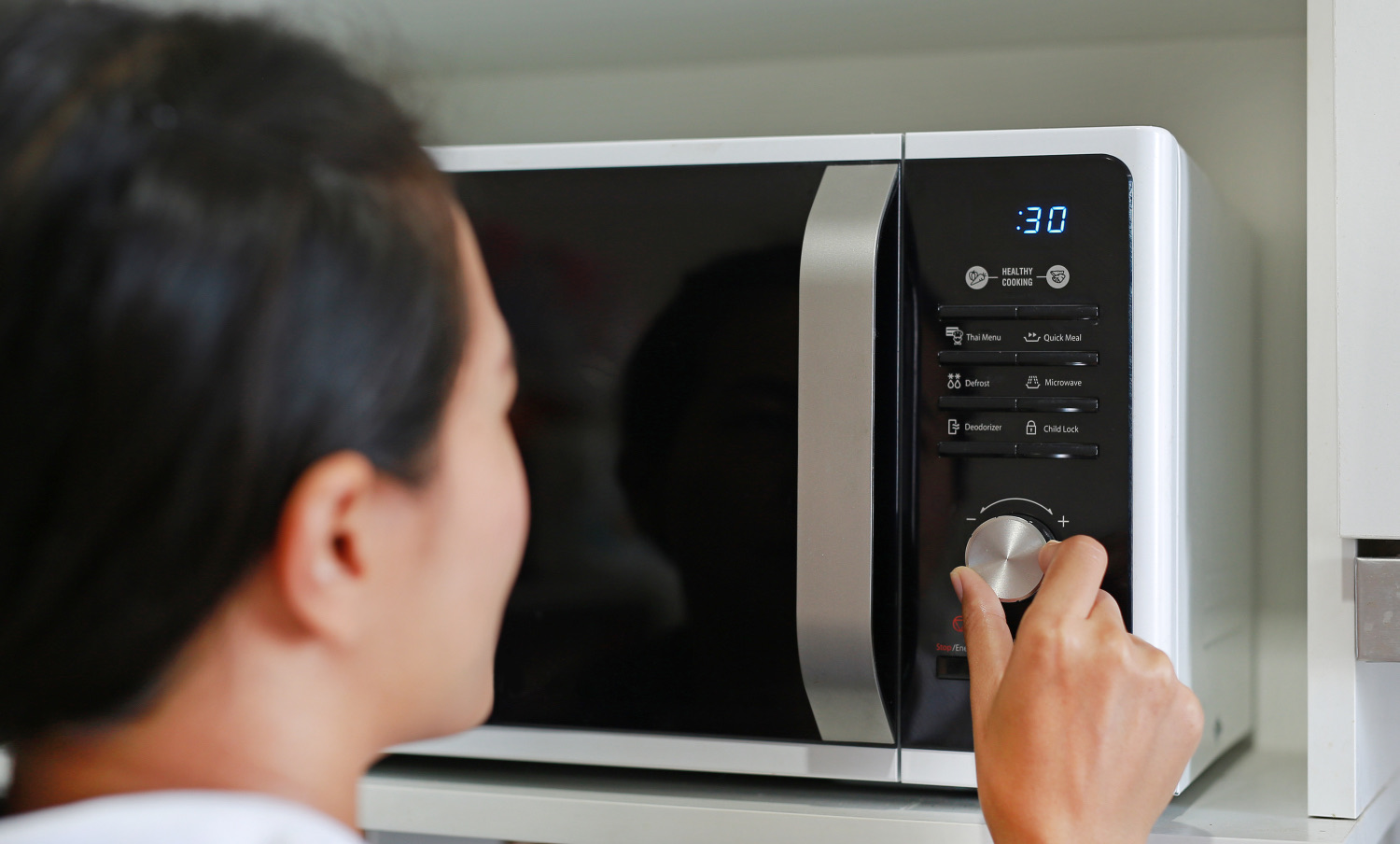
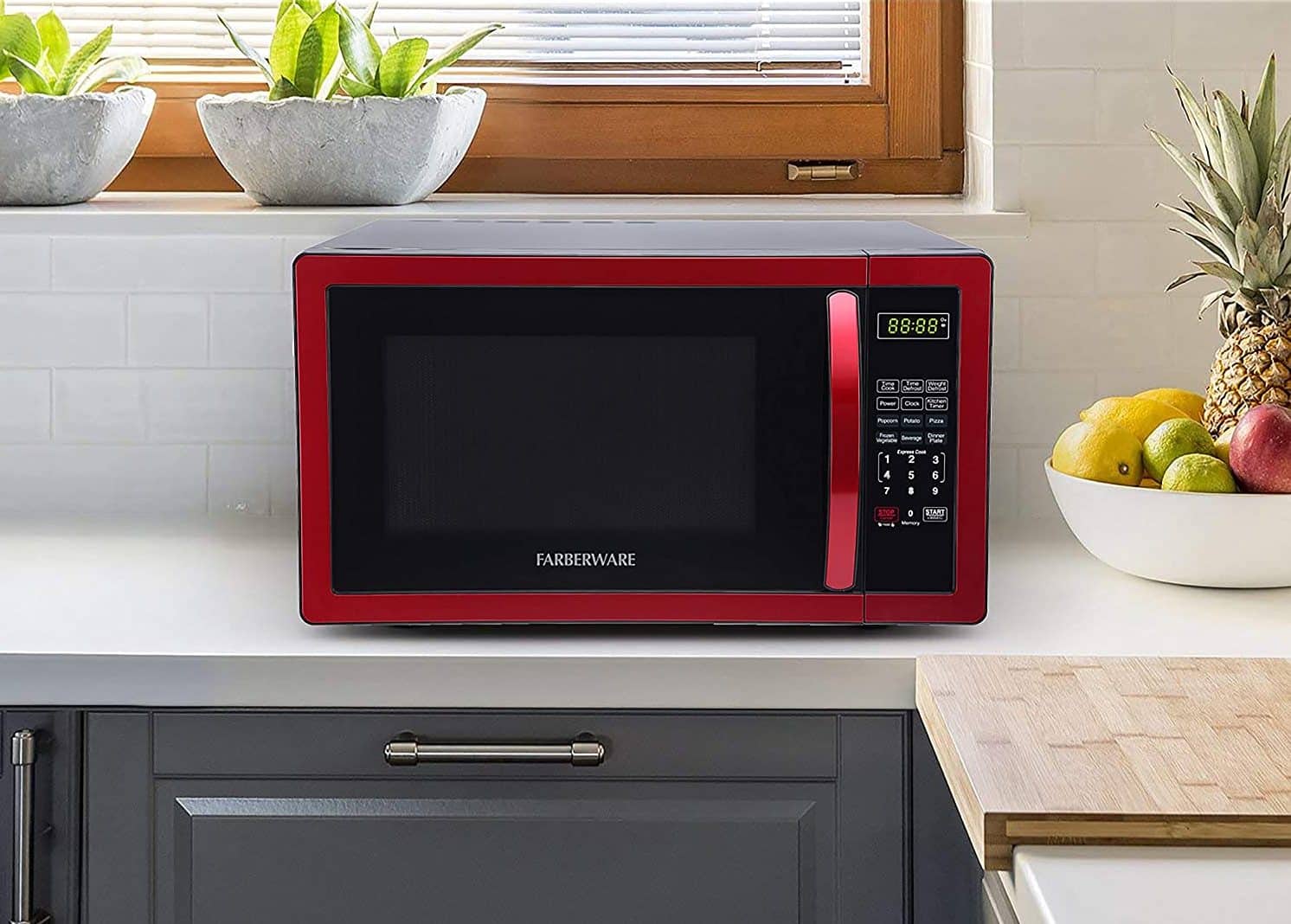
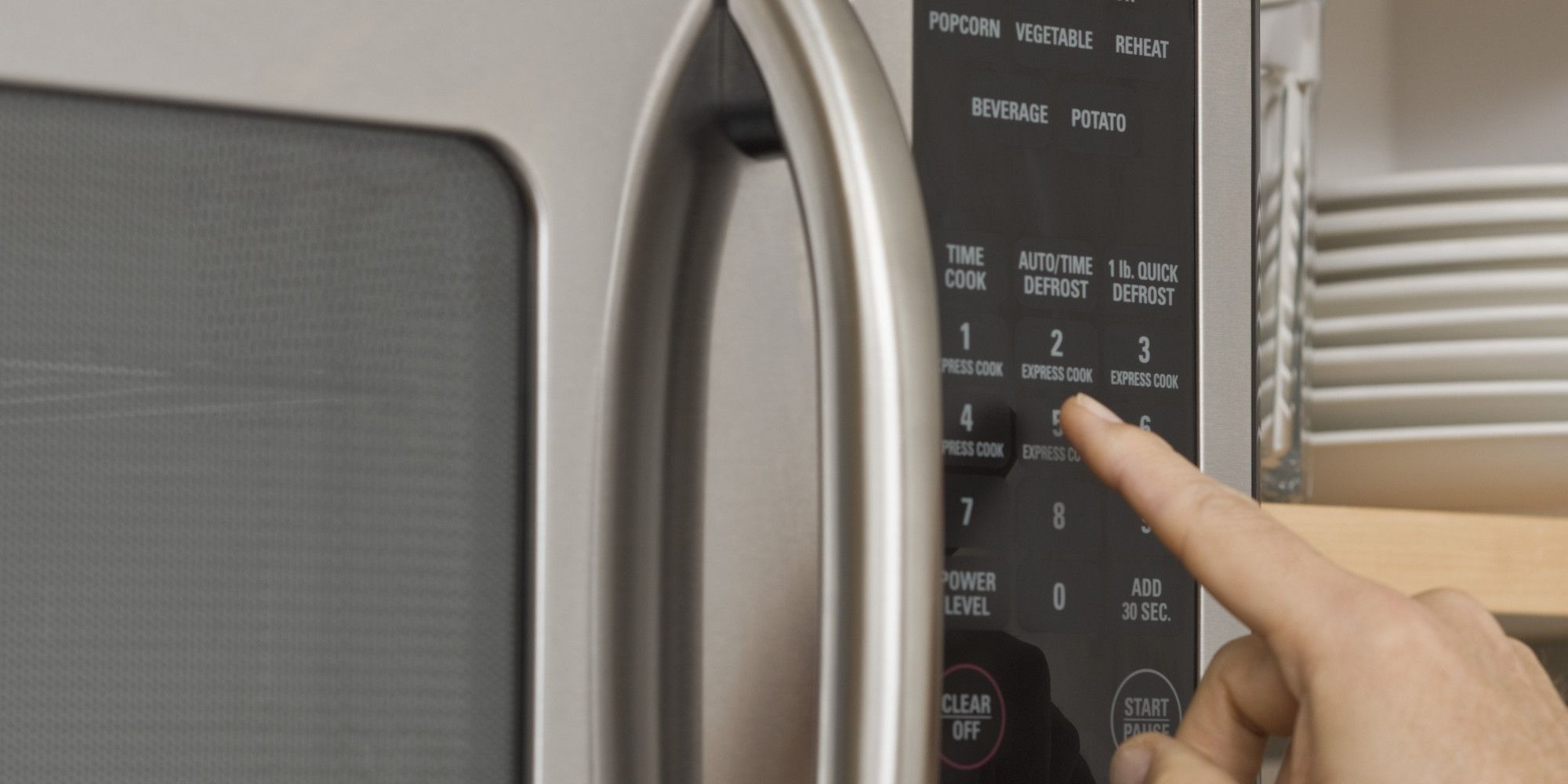
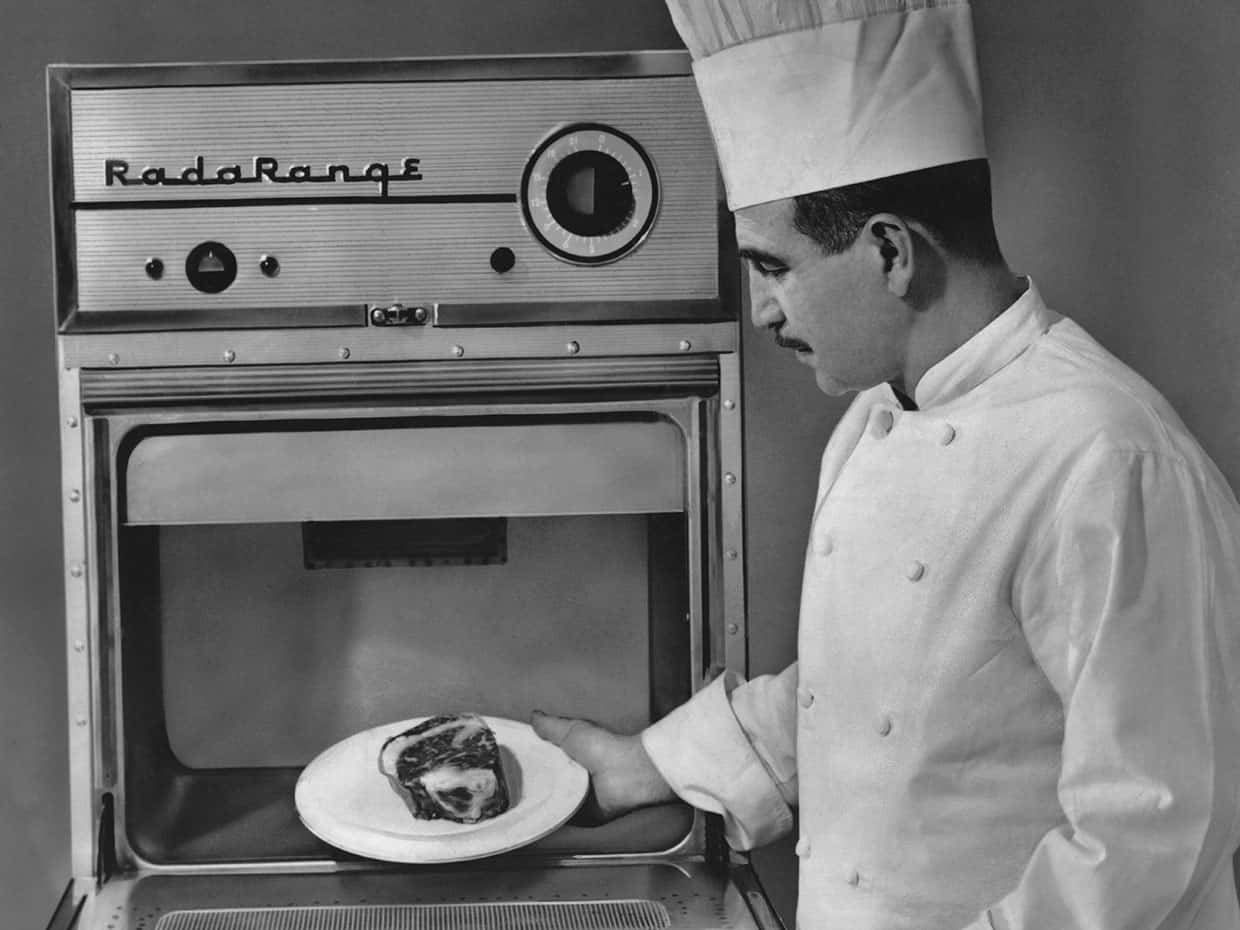
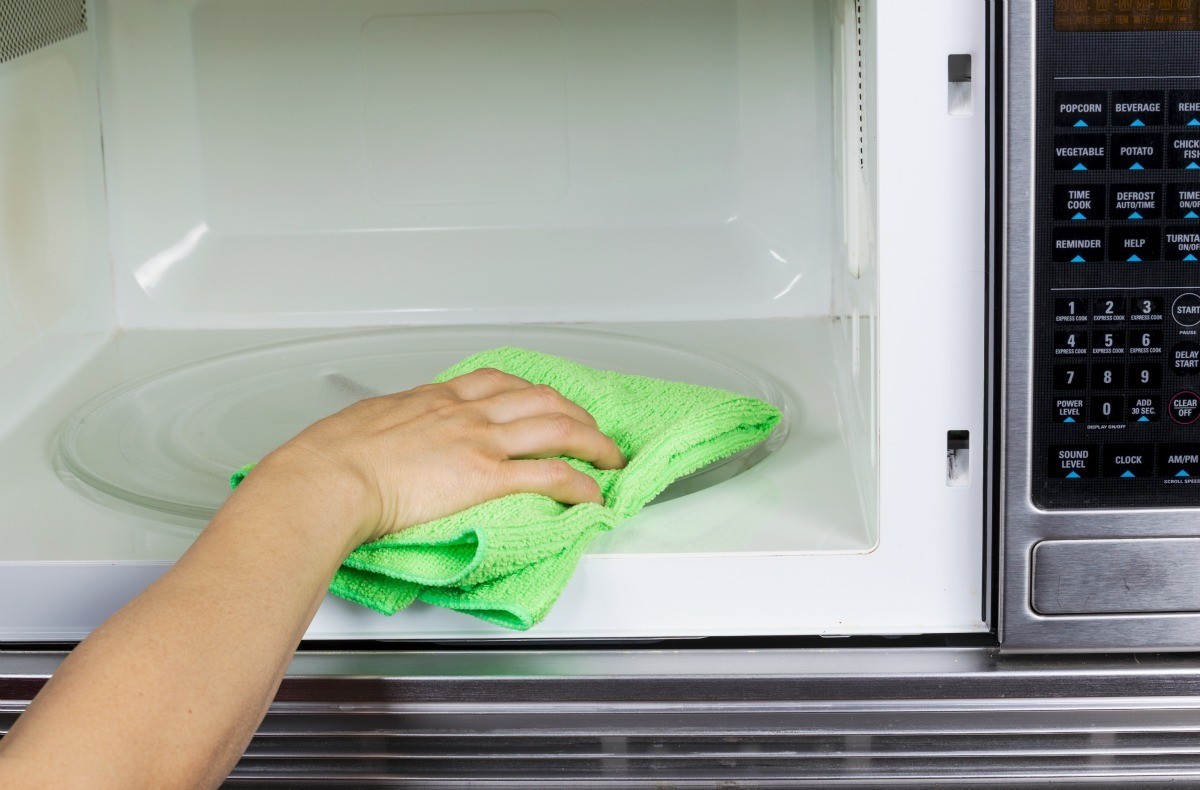
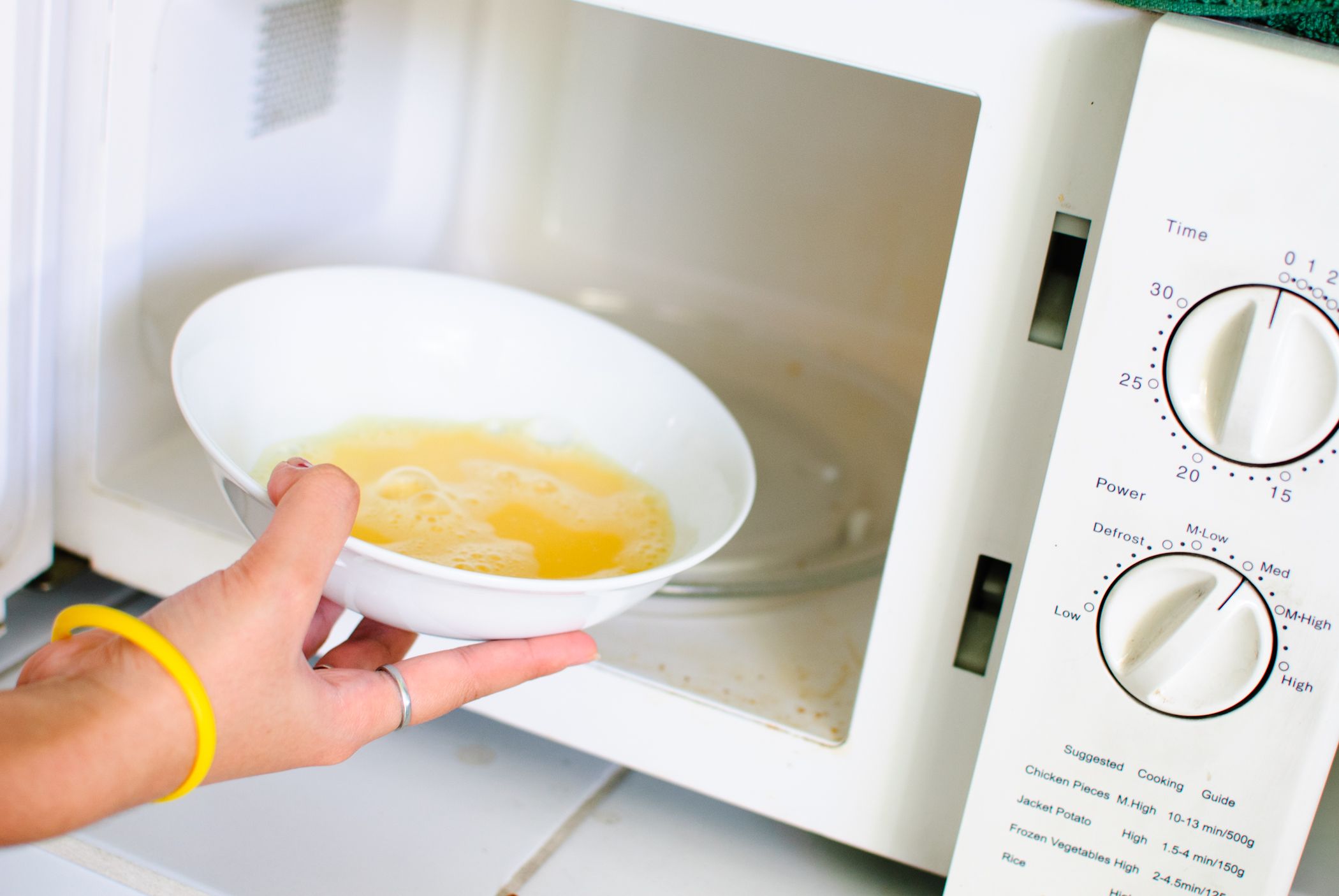
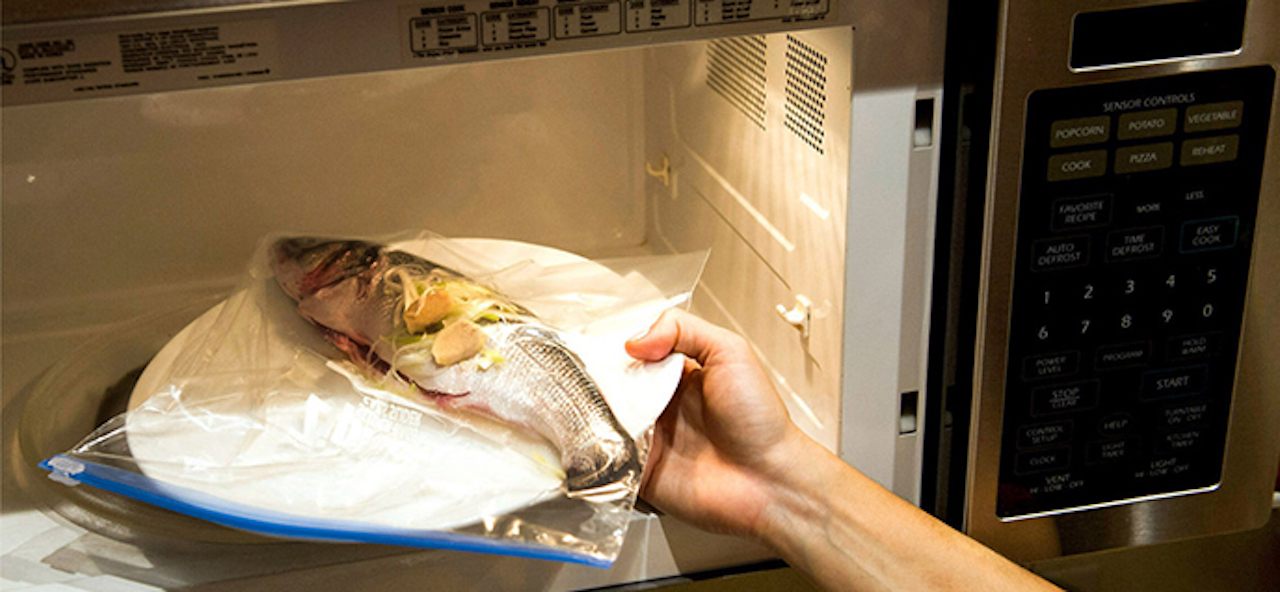

0 thoughts on “How Much Is A Microwave Oven”